Ecuador. In the east of Ecuador, beyond the Andes, the rainforests of the Amazon basin begin. Here live monkeys, exotic birds, caimans, river dolphins, and millions and millions of insects. The forests are almost impenetrably overgrown and the primary means of transportation are boats in all imaginable forms. A jungle tour in the Amazon - on foot or by boat - is a highlight of every trip to Ecuador. Together with our guide, we traveled by canoe and speedboat from El Coca across the Rio Napo to Peru . You will learn what we experienced and what you should not miss on your jungle tour in the following article. In addition, you will get many practical tips for your stay in the Amazon of Ecuador.
Unassigned, unpaid advertising. The article contains affiliate links*.
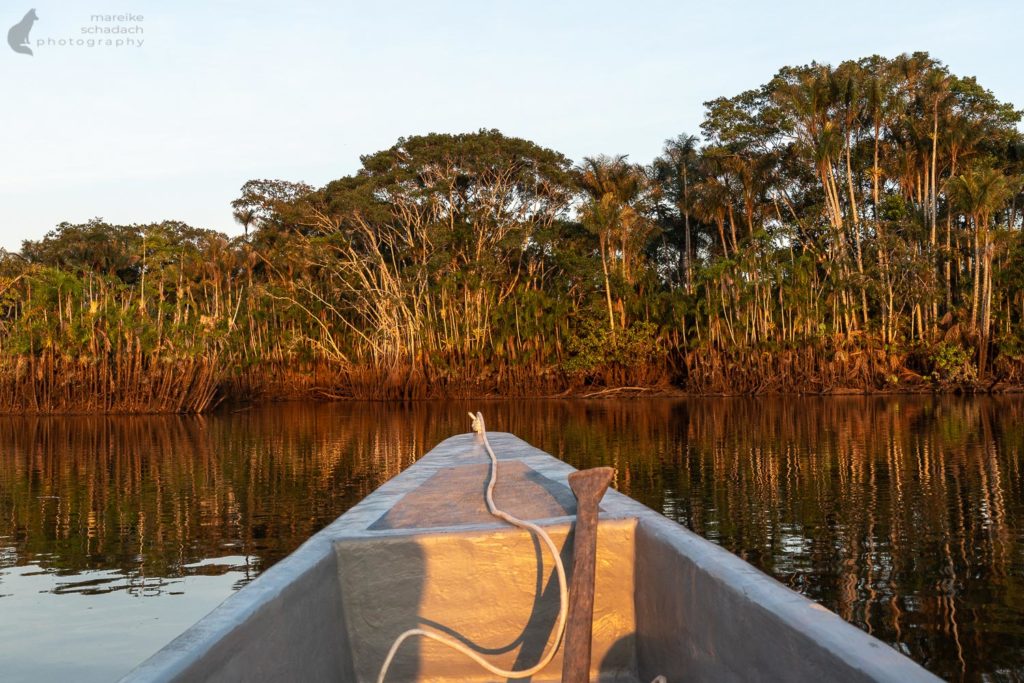
At a Glance
The rough route of our 8-day jungle tour in the Amazon of Ecuador:
- El Coca via the Rio Napo to the Pilchi Commune
- From Pilchi commune by speedboat to Nueva Rocafuerte and on to Yasuni Warmi, to see the pink river dolphins.
- Back from Yasuni Warmi to Nueva Rocafuerte and continue by speedboat to El Coca
Highlights: Pink river dolphins, parrot salt lick sites, night hikes, and night canoe trip, narrow "black water" rivers and lagoons, and last but not least the lush vegetation of the rainforest.
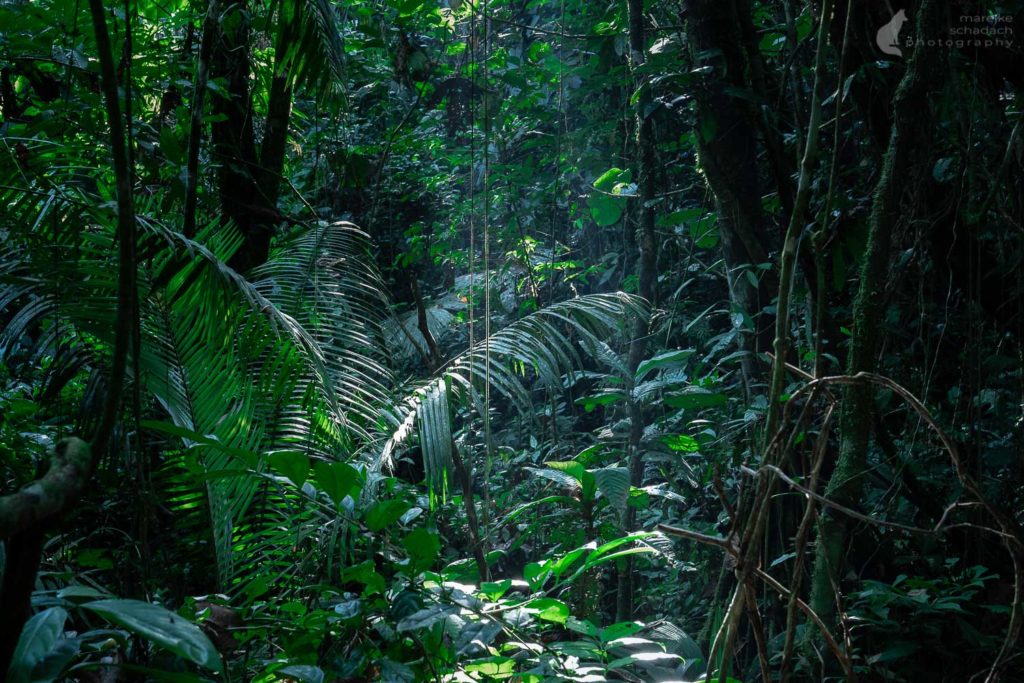
What to expect in this Article
On the Rio Napo in Ecuadorian Amazonia
Guest at the Amazon Lodge Pilche
Jungle walk in the Amazon of Ecuador
Oil Exploration in the National Park?!?!
Pañacocha Lagoon - Swimming with Piranhas
Napo Wildlife Center in the Añangu Community
Night in the Rainforest
By speedboat downriver to Nuevo Rocafuerte
Pink River Dolphins from Yasu Warmi
Night Trip by Canoe on the Aguarico River
For a Drink to Peru: Cabo Pantoja
Yasuni River and Jatuncocha Lagoon
Speedboat from Nueva Rocafuerte to El Coca
Tips for your Packing List
How to get to El Coca?
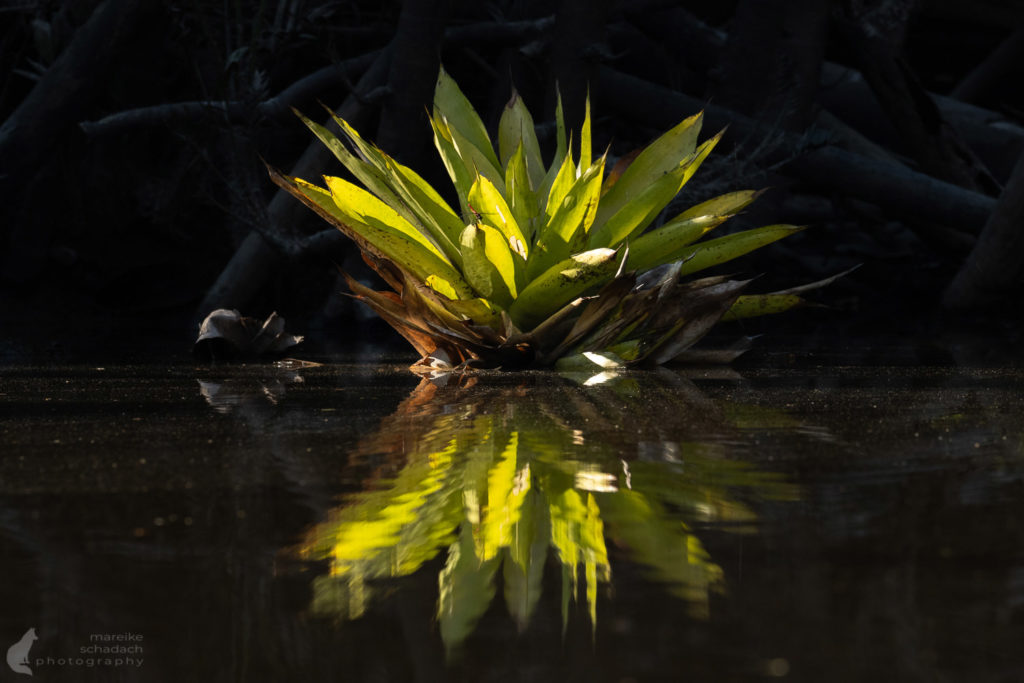
And now: Off into the jungle!
On the Rio Napo in Ecuadorian Amazonia
Only one day before I wore long underpants and thick gloves on the Illinizas Norte. Now I almost collapse from the heat. When we arrive in El Coca it is about 34° Celsius. After we have settled the formalities in the office of our tour provider and received our rubber boots, we continue to the boat dock. Here our motorized canoe is waiting to take us across the Rio Napo to our first accommodation in the Pilchi community.

The water of the Rio Napo reminds me of a lukewarm cappuccino. The river carries so much sediment and suspended matter that visibility in the water is zero. Besides the many small suspended particles, there are lots of branches and even whole trees floating in the water. These sometimes pile up into wild formations on the sandbanks or have wedged themselves into islets. Our boat driver skillfully avoids all obstacles and tries to follow the main current of the river. Smaller pieces of wood keep hitting the steel wall of our canoe. In order to offer as little attack surface as possible, the canoe has a flat hull with very little draft.

Guest at the Amazon Lodge Pilche
The Amazon Lodge Pilche in Indillama is a project of the Kichwa community in the Yasuní National Park. Members of the community run the lodge, drive the canoes, work as guides, or explain their culture during guided tours and other events. Here we are guests for the next three days. As soon as we arrive, we get a taste of what it means to be in the rainforest. A torrential downpour suddenly breaks out of the clouds and we look out of the windows of our hut with wide eyes. But after ten minutes it's all over again and we get ready for our first jungle walk.
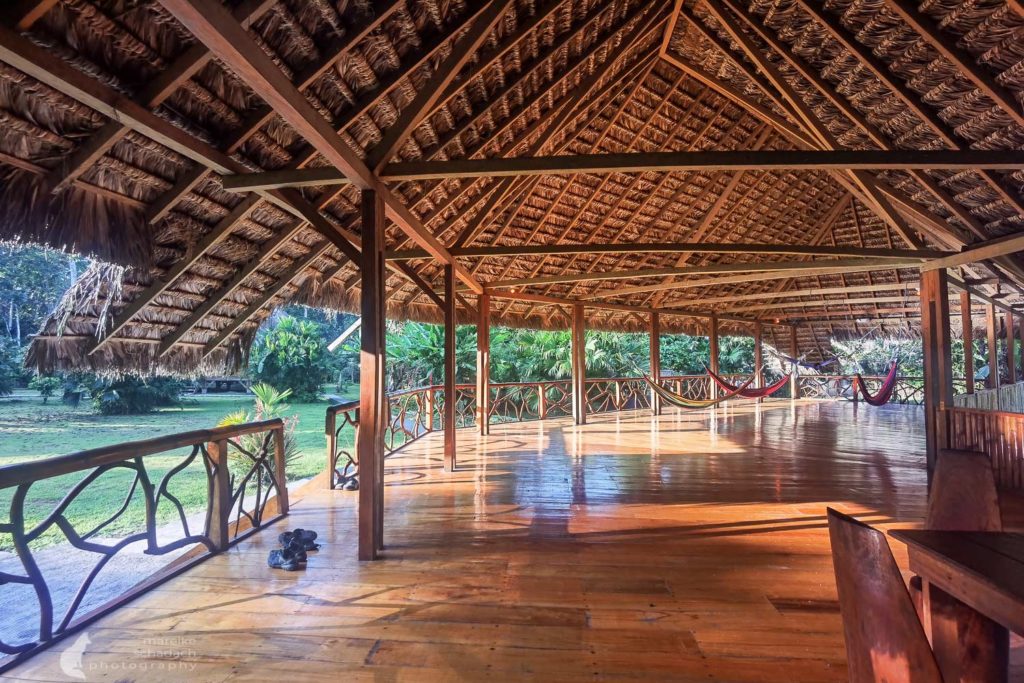
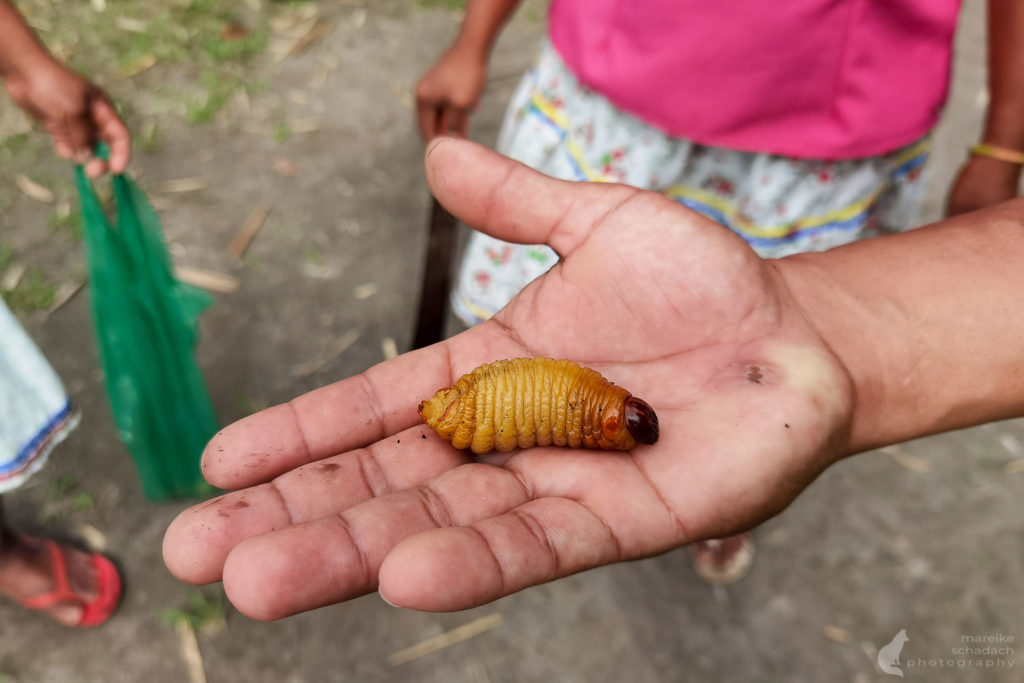
Jungle walk in the Amazon of Ecuador
Our first jungle tour! Lubricated with insect repellent and equipped with rubber boots and a camera, we set off into the jungle. After the first few meters, we already see leaf-cutting ants as well as cacao beans, which grow as parasites on other trees. On wooden planks, we continue through the swamp into the forest. Different sounds reach our ears from all sides: Monkeys that sound like lions or birds that remind us of a car horn. We marvel at gigantic spider webs (without the expected monster spiders) and huge butterflies whose wings are blue on the inside and have a large eye on the outside.
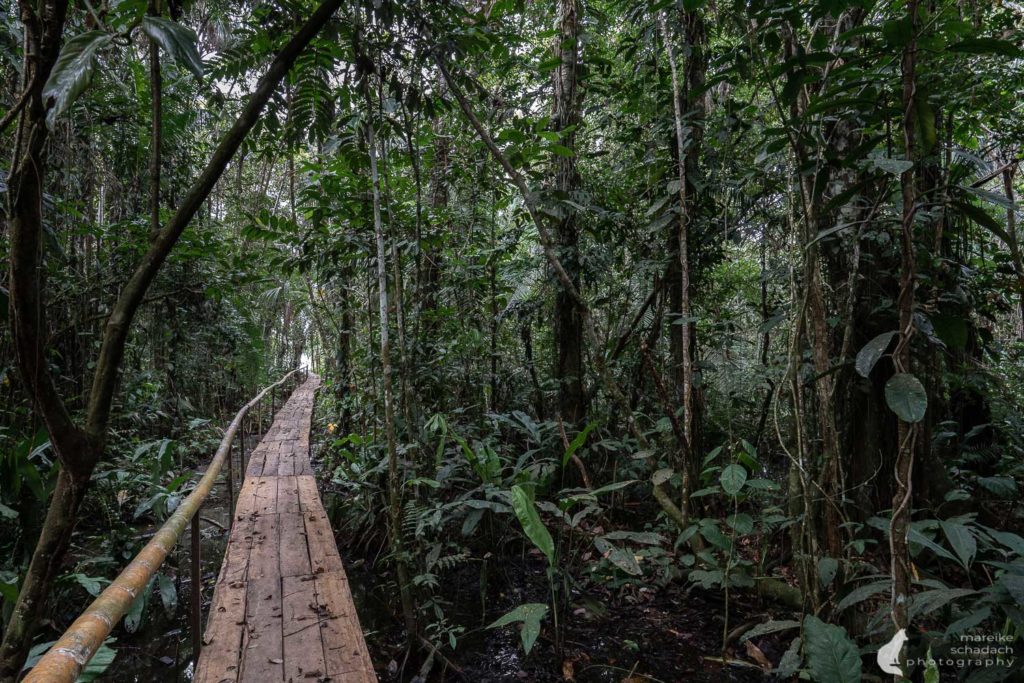

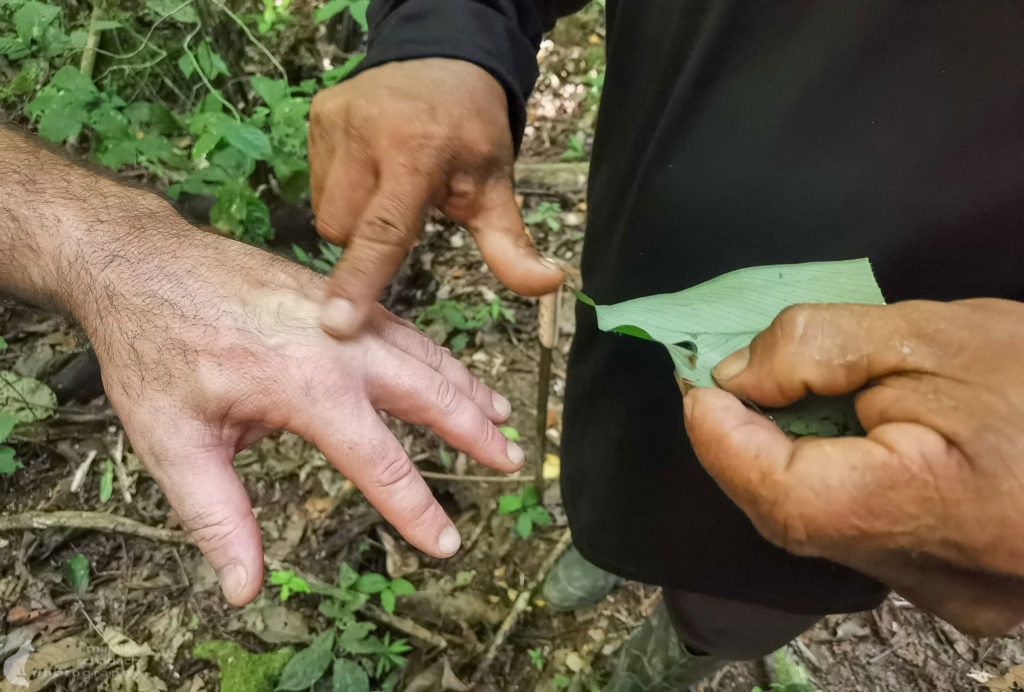
It is amazing what you can see here within a few meters. You just have to know where and what to look for. Our guide has practiced this and shows us the most different insects. Suddenly there is a crash above us in the treetops: a monkey horde. One of the female monkeys was even carrying her baby on her back. What a great beginning! Soon we start our way back. Just in time to see the sunset over the Rio Napo. The sky coloring is just unbelievably beautiful.

Oil Exploration in the National Park?!?!
During dinner, our guide tells us more about the conflicts between the communities and the oil industry: In Yasuni National Park alone, there are 16 oil industry blocks, each with 400 to 600 workers.
A disaster happened about 16 years ago: a pipeline burst. The water was contaminated making fishing impossible for a long time. Tankers had to bring drinking water to the communities and food had to be brought in as well. However, adequate compensation from the oil company was not forthcoming. Nature has recovered to some extent from the worst consequences of this disaster. Nevertheless, the permanent strain on the ecosystem is clear: the jungle has become increasingly empty in recent years. Who's surprised? The gas flames at oil production facilities alone burn countless insects and birds every night, attracted by the light of the flames.


Want to know more about species conservation, jungles, and indigenous peoples? Here are a few books* to browse.
Pañacocha Lagoon - Swimming with Piranhas
t is still dark when we get up. But the first birds and insects are already preparing for the sunrise and are already making a lot of noise. We get into our canoe and set off. Our destination is the Pañacocha Lagoon. It is a gem among the waters in the Ecuadorian jungle and also popular with river dolphins. Maybe we will be lucky and see one of these special animals.

But we are still on the Rio Napo. The river is covered by fog, the other bank can only be guessed. The wind is cold and I put on my long sleeve and soon after my rain jacket. I would never have thought it possible that I would get cold here in the jungle.
After a short time, our guide surprises us with a stop at a steep bank. It is a parrot lick. Hundreds of Green Amazons hang on the steep bank or fly around. What a confused and noisy mess.
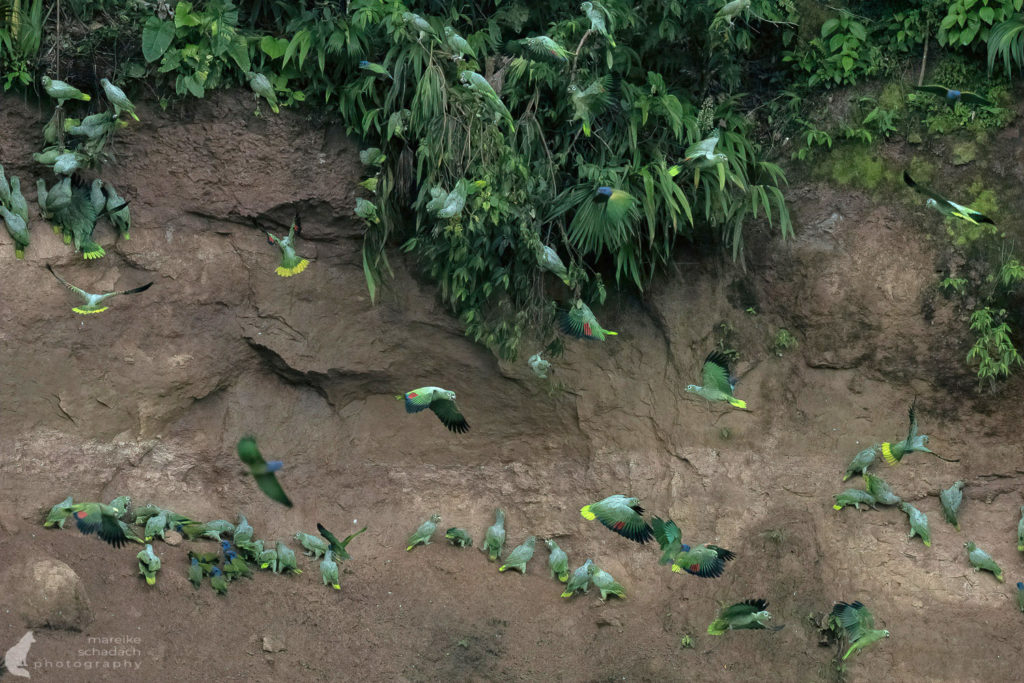
On we go, always downstream. We now see more and more huts, small landing stages as well as small banana plantations on the left bank. Then we turn into the Rio Pañayacu.
The narrow river winds in countless curves, behind every corner it is more beautiful than before and my eyes get bigger and bigger. The palm trees are reflected in the water, now and then lianas hang like a curtain over the river, and on the banks, everything grows on top of and over each other. After a while, the lagoon finally opens up. It is so beautiful and we are all alone. The two lodges that exist here are closed because of Covid and the resulting lack of visitors in the Amazon of Ecuador.
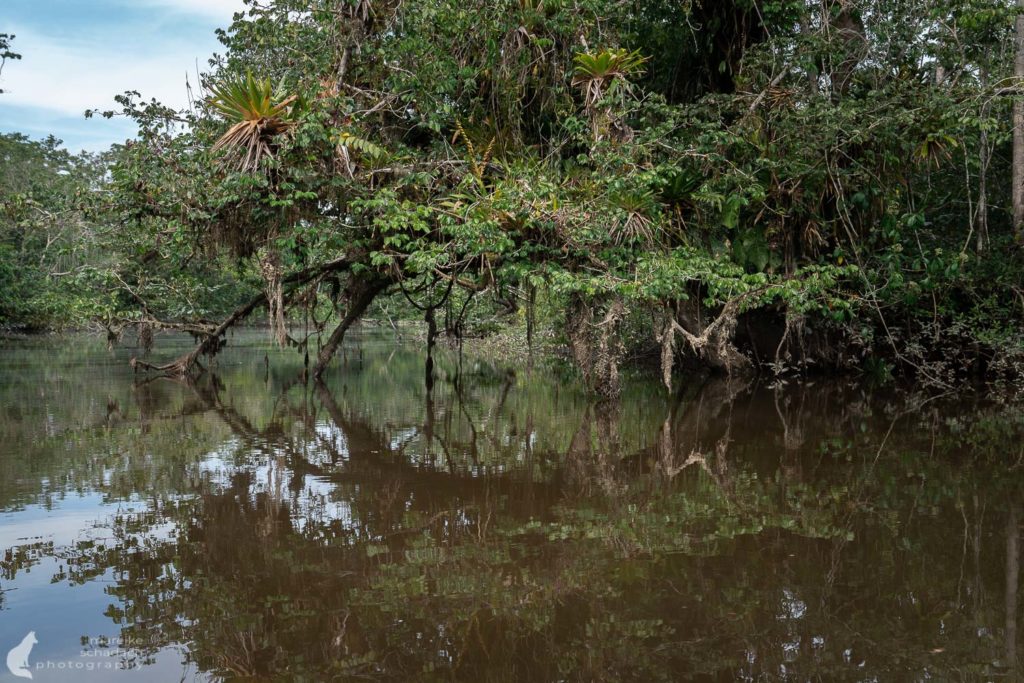
Another Jungle Walk
Equipped for our jungle walk, we walk through the abandoned site and already see the first snake. Its head is poisonous green but nevertheless, it is not supposed to be poisonous at all. Our guide shows us the combs of an empty ant nest at the entrance to the trail. Now a tarantula lives here, but it is completely unimpressed by us. We see more spiders, numerous butterflies, a tiny frog, and a lizard during our hike. After about an hour I am soaked through. Only one thing helps: off into the water!


Cooling down in the Pañacocha lagoon. Will I be eaten now?
Anyone who goes into the water in the Amazon is eaten by piranhas. And those who don't get eaten are instead infested with parasites that invade the body. Is that right? I have our guide assure me at least three times that I will survive a swim in the Pañacocha Lagoon. Finally, I am the last of our small group of four to slide into the cappuccino-brown water. It's warm, but still a refreshing treat. Besides, it's so murky that I can just about see my hands underwater. To make boarding easier, we have tied a small wooden canoe to the side of our big motorized canoe. Easier boarding? Well, we manage it and almost sink the small canoe. After laughing hard, it's time to shovel water.

We continue after a lunch break to Laguna Piguali. Here everything looks a bit wilder again. We see even more birds than before, including hoazins, a red macaw, cormorants, an osprey, and several herons. Even a monkey horde shows up. And on the way back, shortly before the Rio Napo, even a river dolphin appears in front of our boat. Unfortunately, I see the dolphin only in the corner of my eye, then everything was already over.
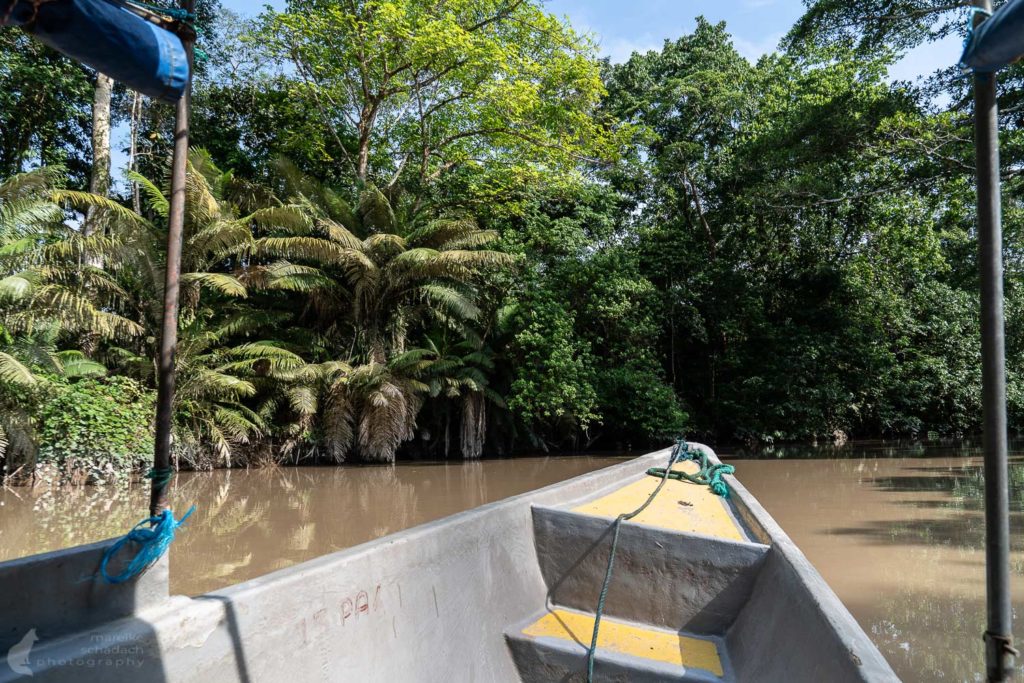
After a short visit to the family that lives at the mouth of the Rio Pañayacu, we finally make our way back. The sun is already low and the sky in front of us is slowly changing color. It is the 31st of December, we have beer and cookies to celebrate. We celebrate New Year's Eve with a delicious dinner back at our lodge in the Pilchi Commune. But after one glass of wine, we were already so exhausted that we say goodbye.
Napo Wildlife Center in the Añangu Community
Above the Trees
What a view! We start the new year with a trip to the Napo Wildlife Center. To be exact: to the 42-meter-high observation tower. The way up to the observation deck seems to have no end at first. The stairway spirals up and up and at some point we reach the first treetops. Finally, we are at eye level with a nest of the Montezuma Oropendola. It hangs dangling like an overripe fruit from a large tree right next to the tower. I wait for a while. But unfortunately, it seems not to be in use right now. It goes up even further. Slowly I get a little queasy and hold on to the railing. Promptly I am bitten by an ant. Fortunately, it was not one of those "Bullet Ants", because their bite is said to hurt as much as a shot from a pistol.
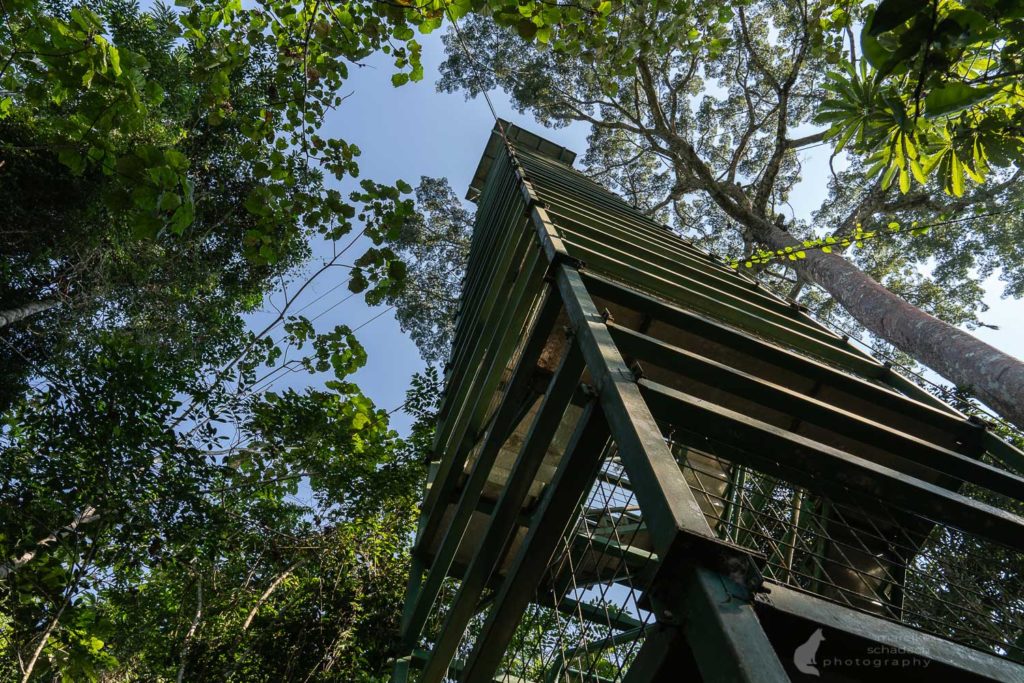
With every floor we climb, the view gets better. From the top we finally have a fantastic panoramic view over the Amazon of Ecuador: the Rio Napo on one side and on the other side a sea of leaves in different shades of green. Only the birds don't really want to show themselves. Only a red macaw flies as a small colorful dot over the sea of leaves and disappears as quickly as he came.
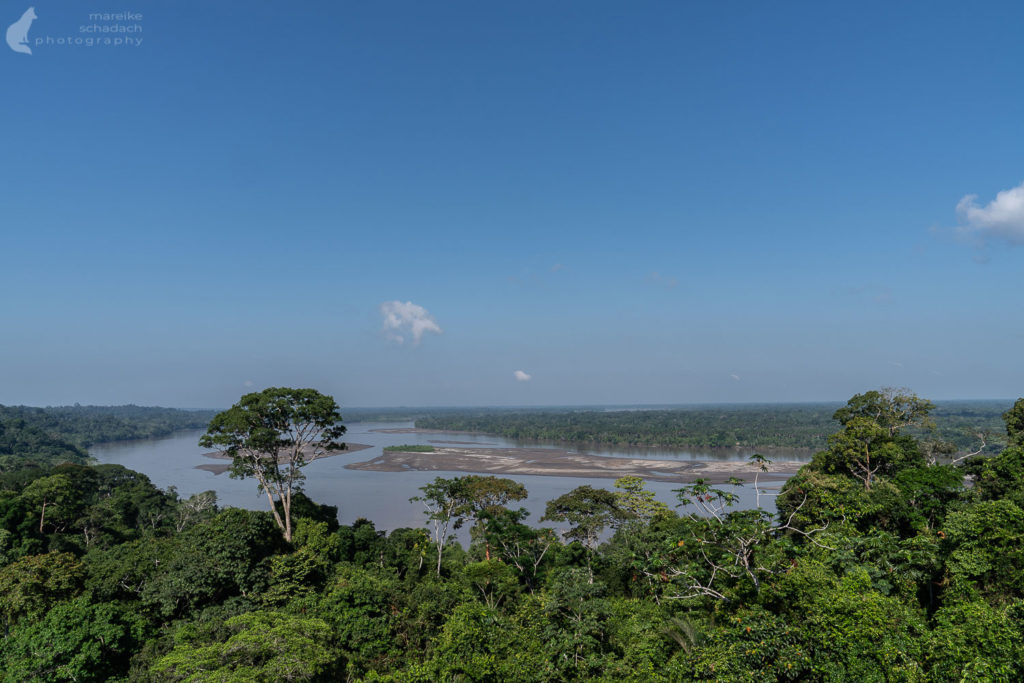
Parrots Salt Lick
Afterward, we go upstream a little bit from the observation tower. Our captain navigates skillfully between logs and sandbars and brings us to a sandy bay. From here it is about 800 meters to Clay Lick, another salt lick.

The Napo Wildlife Center salt lick in the Añangu community is said to be the most accessible in the Amazon of Ecuador.
Several dozen miller amazons (which are small green parrots) perch on the ground, lick salt, drink, argue fly up, and land again. But all at once they all fly up. The lick, which was densely besieged a minute ago, is now completely deserted. Finally, two red macaws arrive and make my photographer's heart beat faster. After about half an hour the first Miller's Macaws show up again. At first, they squat indecisively on the tree branches and between the huge leaves of a plant whose name I, unfortunately, don't know. But soon there is again colorful activity at the Clay Lick site. This time even a few of the pretty golden-cheeked parrots mingle with the miller amazons.
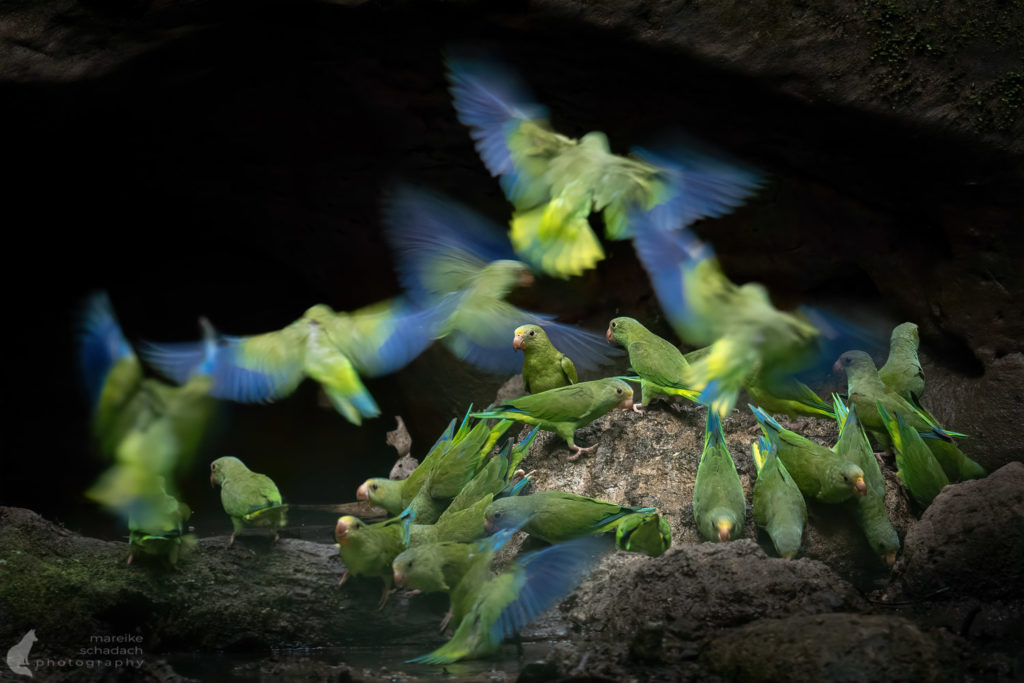
The clay lick can be easily seen from a small observation hut. There one sits somewhat hidden, does not disturb the parrots too much, and is still protected from possible rain. An information board on the wall lists all the parrot species found here: there are, believe it or not, ten different parrot species. We saw three different species during our stay.
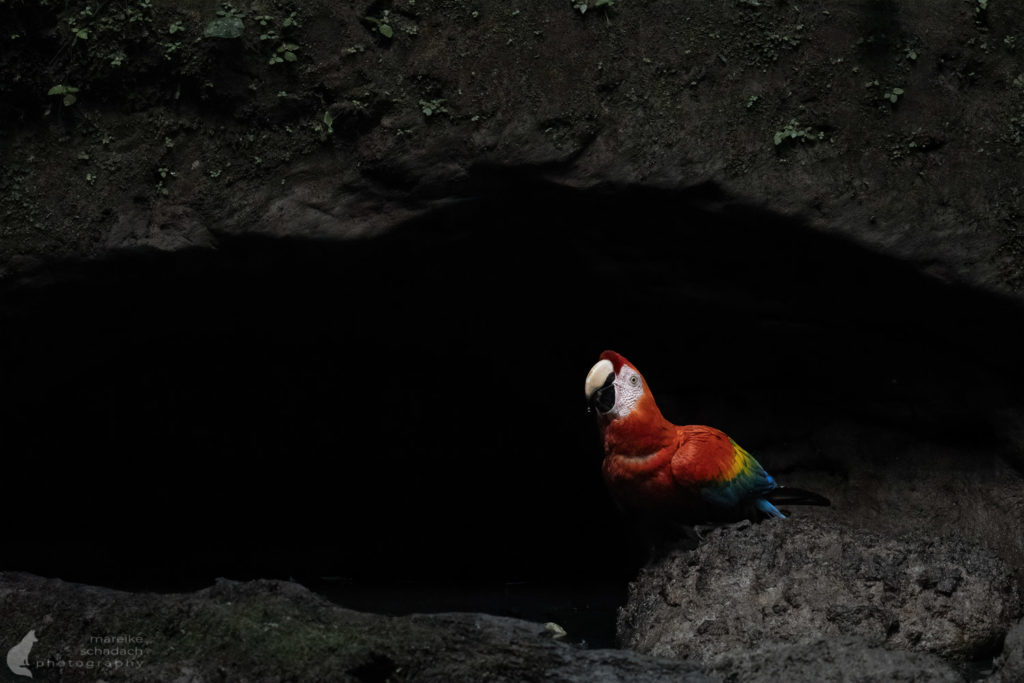
What has worked best for me when photographing in the jungle?
Night in the Rainforest
Search for Caimans
With rubber boots, mosquito spray as well as headlamps we set out for our first night hike after dinner. Our destination are the ponds behind the Pilchi community center. There live caimans, a kind of small crocodile. You can see caimans best at night because their eyes reflect orange-red in the light of the flashlight. It doesn't take us long to find our first caiman. A baby. In the neighboring pond there is another infant caiman hanging around. Its head looks out and its body hangs vertically down into the water. What a funny sight.
There are also frogs, a tarantula, and other spiders as well as numerous other insects that we did not see on our jungle walks during the day. Especially impressive was the plank walk through the swamp at night and the giant frog with the hump on his back right under our wooden hut. It must have been as big as a kitten and croaked loudly.
By the way, insects are known to be attracted to light. So it was not a good idea to put the headlamp on the head. Within fractions of a second, all the flying insects of the jungle had gathered around my head...

Day and Night - two different Worlds in the Jungle
During the day, the jungle sometimes seems empty. At least there, where you normally walk. This is because life takes place mainly on the higher floors. Monkeys shimmy through the treetops, and birds call their fellow species or warn of intruders. On the lower floors, on the other hand, we mainly see insects: Spiders, beetles, grasshoppers, ants, and butterflies. The latter are particularly colorful and also huge compared to our native butterflies.
At night, the density of insects multiplies again: we see more spiders, more beetles as well as more grasshoppers. In addition, there are more species such as scorpions or praying mantises. A night hike in the jungle is simply exciting, everything seems mystical and mysterious and the animals seem even more bizarre in the light of the flashlight.
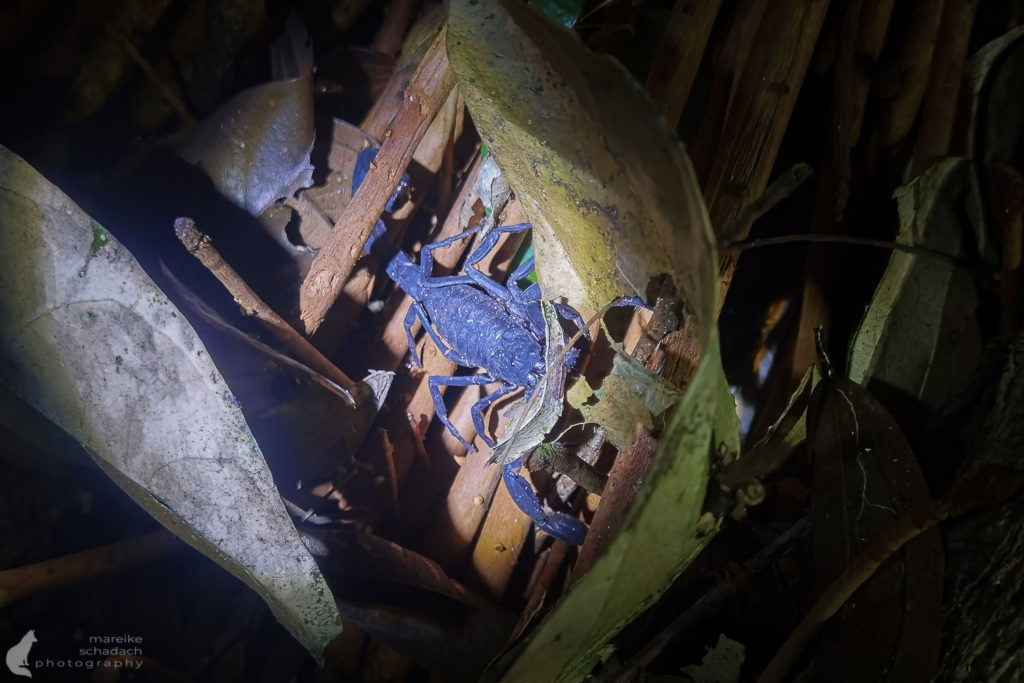
Tip: turn off your flashlights and experience the total darkness in the middle of the jungle.
During the day we sometimes saw no animals except ants for a long time. It was quiet in the jungle. Then neither bird calls nor raging monkeys could be heard. Our guide thinks that the jungle is changing, there are fewer and fewer animals. Blame the increasing pollution of the ecosystem by the oil drilling we learn.

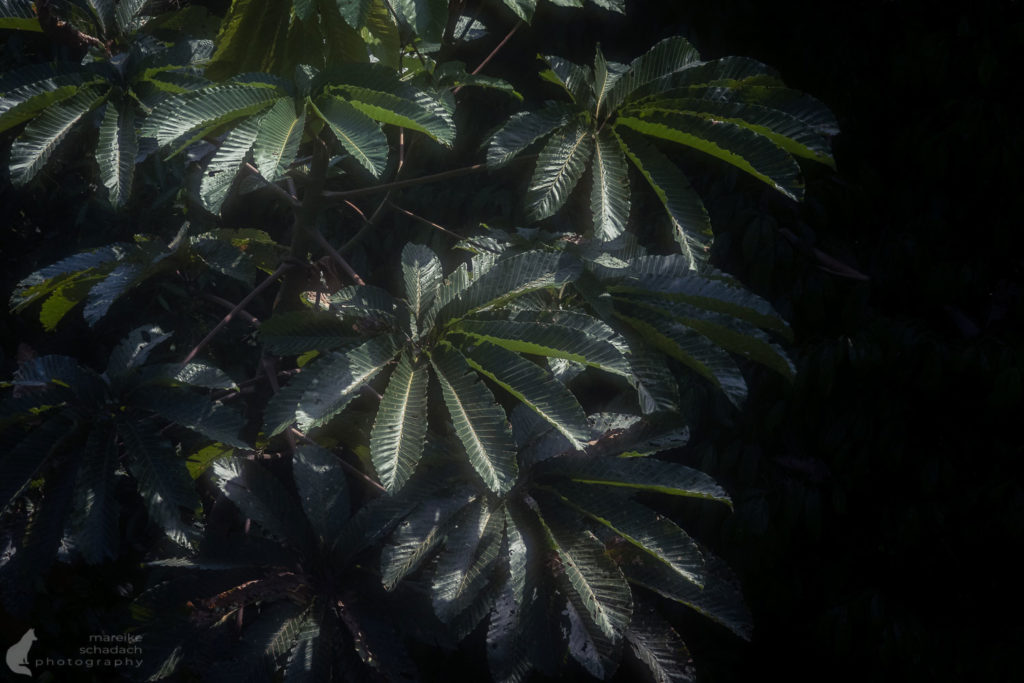


By speedboat downriver to Nuevo Rocafuerte
Canoes of all sizes ply the Rio Napo, most of them motorized. Probably the most powerful motor, however, is the public speedboat that runs between El Coca and Nuevo Rocafuerte. The boat, almost full and crammed with luggage, collects us at the jetty of the Pilchi commune. Somehow we manage to squeeze onto the benches with our luggage. The wild ride on the Rio Napo takes two hours and thirty minutes. The wind and the engine roar in my ears and the wind blows refreshingly in my face. Next to me, the water splashes up the sides of the boat. It gets especially high when the boat hooks to avoid wood or sandbars. As a precaution, I tighten the fastener of my life jacket a bit more.

The further we go down the Rio Napo, the more populated is the river bank. The small settlements owe their existence mostly to the oil. We see two large oil tanks of PetrolAmazon and again and again tank trucks that are transported by boats.

Nuevo Rocafuerte
The village of Nuevo Rocafuerte has less than 500 inhabitants. Besides a barracks, the only hospital in the wider area is located here. The nearest roads are about 250 km away.
On the dusty main road, street dogs run up and down, vultures circle overhead and mopeds rattle past us. No one wears helmets here and there are sometimes three or four people sitting on the boxes. We get lunch in one of the hostels. Afterward, we mingle with the people in front of the village pub. Everyone knows everyone here, we are eyed curiously by the locals and wish each other a "Feliz Año Nuevo". I was most impressed by a lady in light blue high heels. She roared up on a quad bike, dragging a long plume of dust behind her. She also greeted us with a hearty "Feliz Año Nuevo!"
We pull ourselves away and head out to buy cookies before our next leg of the trip. For minutes I search the store shelves for Oreo cookies. In vain. Oreo cookies haven't made it this far yet. Always a sure sign to me that I have now reached the end of the world. The saleswoman shows us similar cookies, with which I happily get into the next canoe. This one belongs to the Yasuni Warmi community, where we spend the next three nights. It's a small, open canoe, with no shade and rock-hard stools to sit on. After an hour and a half, I know exactly where my ischial tuberosities are.

Pink River Dolphins from Yasu Warmi
Yasuni Warmi means "women of the water". This means the river dolphins. The context was not clear to me, I think I would have to go deeper into the mythology.
The community of Yasuni Warmi is located at the far end of Ecuador, across the border from Peru. Here the Aguarico River branches off from Rio Napo, and from the Aguarico in turn branches off the blackwater Rio Cocaya. Blackwater means that there is less sediment, but more humic substances and fish in the water. So it is not surprising that the pink river dolphins prefer to stay in the black water rivers and lagoons.
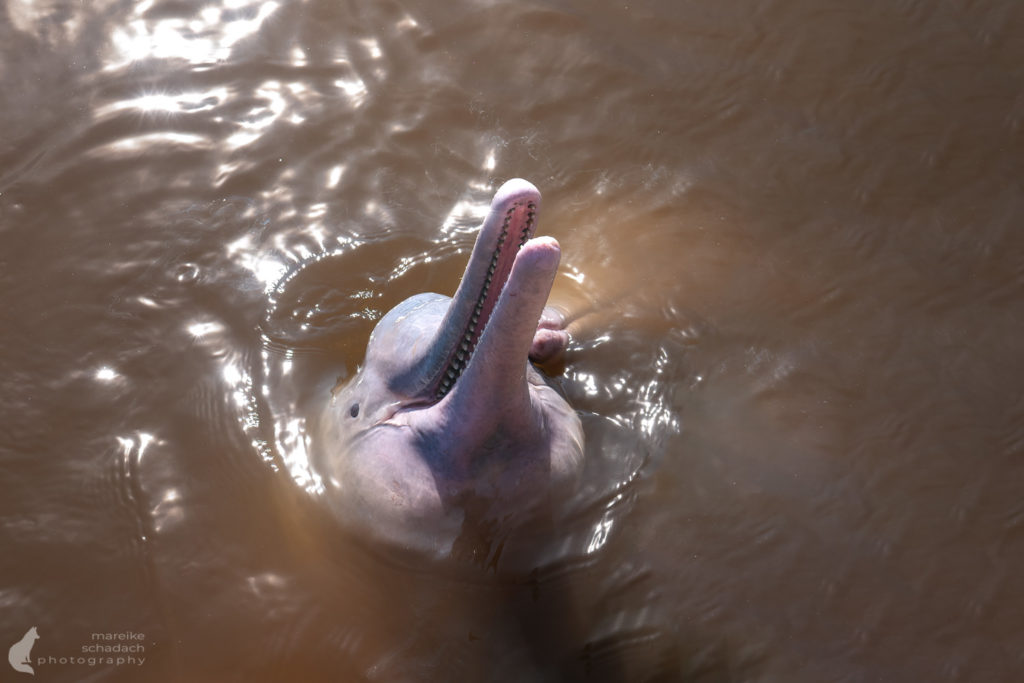
About twelve years ago, the Commune started attracting river dolphins with metal sounds. The curious animals eventually came right up to the jetty and were given a fish as a reward. Therefore, you have the best chance to see the river dolphins here in Yasuni Warmi and maybe even give them a fish or go into the water with them.
On our second to last day in the Amazon of Ecuador we pay another visit to the river dolphins. As soon as we arrive we see two animals hunting for fish at the confluence of the Rio Cocaya and the Aguarico. Marcelo strikes the two metal rods against each other. The rhythmic sound reminds me a bit of the ringing of a church bell. But today the dolphins do not come up to the jetty. Apparently, the animals are more interested in hunting themselves today.

Night Trip by Canoe on the Aguarico River
A night trip by canoe is something very special. It is pleasantly cool and the evening atmosphere on the river at sunset is pure relaxation. But with the darkness it gets more and more exciting. We search the river banks with our flashlights. Who will find some red eyes first?
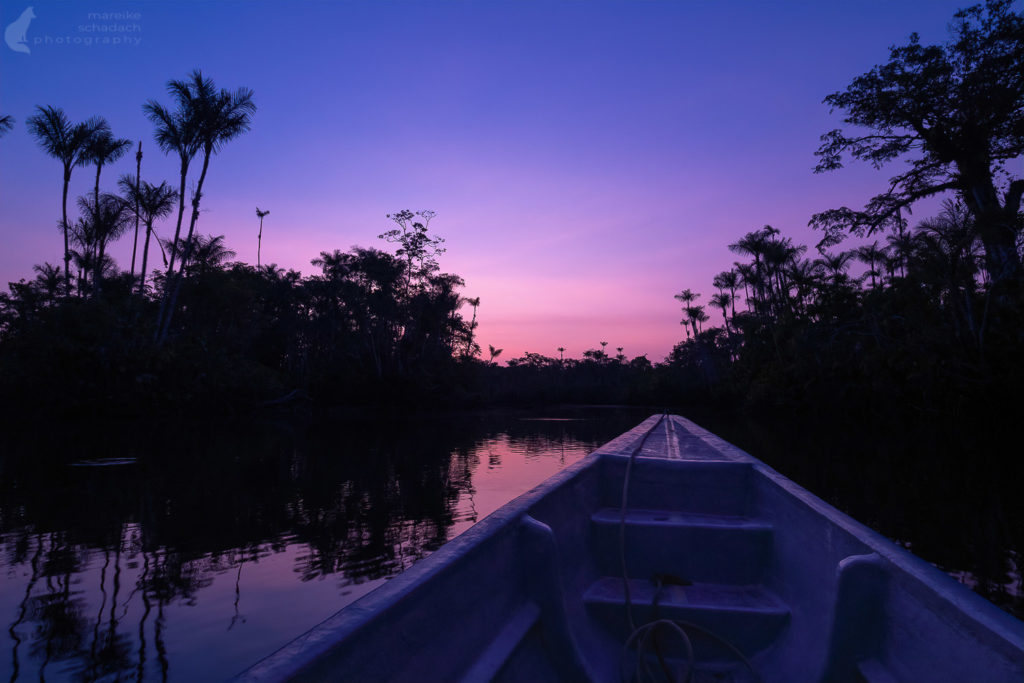
The primeval-looking caimans usually lurk close to the shore between vegetation. Mostly only the eyes and nostrils look out of the water. Definitely hard to recognize. But if you scan the river banks in the dark with a flashlight, you can spot the caimans quite easily. Then the eyes light up red-orange and cannot be overlooked. Most of the time, however, you only see the eyes from a distance.
During the day we saw a caiman only once. It was well camouflaged in the murky water and lurked near branches sticking out into the water.

For a Drink to Peru: Cabo Pantoja
We say goodbye to Yasu Warmi and continue downstream to the border with Peru. The first town after the border is Cabo Pantoja, formerly Rocafuerte. We stroll along the shore in this village of about 500 inhabitants. There is not much here. Some canoes are lying on the shore, there is a small store and also a bar where we get a cool drink.


Refreshed, we continue in our small open boat. The sun shines relentlessly and the wind stirs up the sand of the shore banks. I slip on my long-sleeved shirt and try to protect myself as best I can from the burning sun. There is no shade. Wind, current, sandbank, and trees in the water make the trip a challenge even for our captain.

Before we turn into the Yasuni River, we make a short photo stop at the border between Peru and Ecuador. From here it is another eight kilometers to the checkpoint at the entrance to the Yasuni National Park.
Yasuni River and Jatuncocha Lagoon
At the checkpoint at the entrance to the Yasuni National Park we have to show our vaccination cards for the first time. Our destination is the Jatuncocha Lagoon, the largest lagoon on the Yasuni River. I am amazed at how different the vegetation of the river is from the vegetation of the previously visited rivers. In addition, the river dolphins seem to like it here very much, because we see several animals at two different sections of the river.

At first, the Jatuncocha Lagoon seems quite unspectacular. But the further we drive in, the more narrow and overgrown it becomes. We meander with the canoe further and further through narrow rivers. My Maps.Me map doesn't show anything here for a long time. Welcome to the wilderness. We see various birds, turtles and even a caiman about two meters long up close.
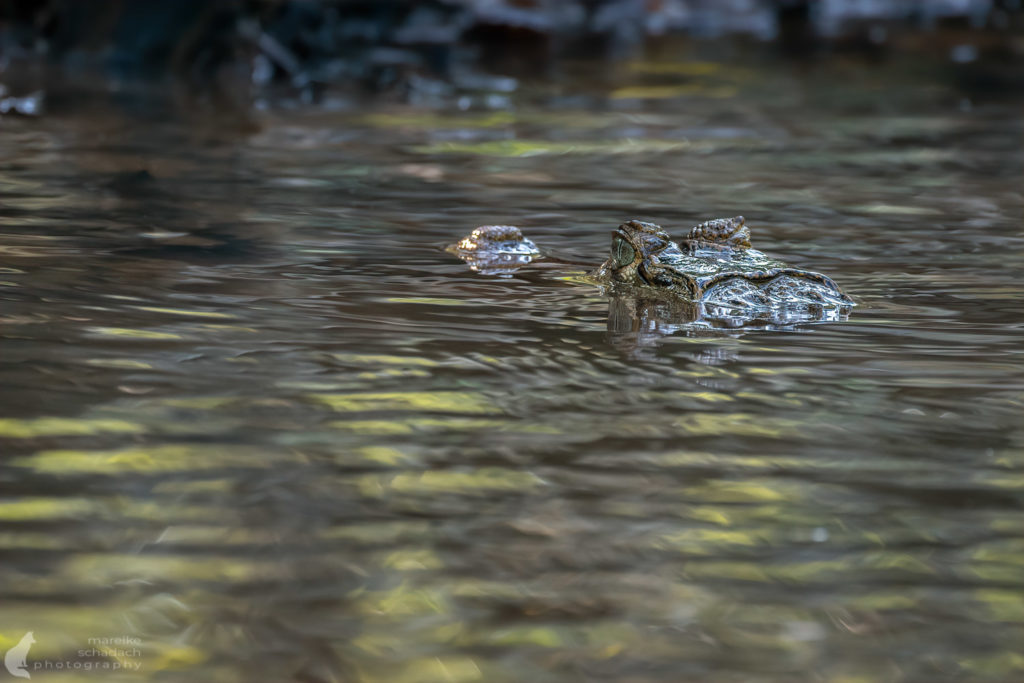
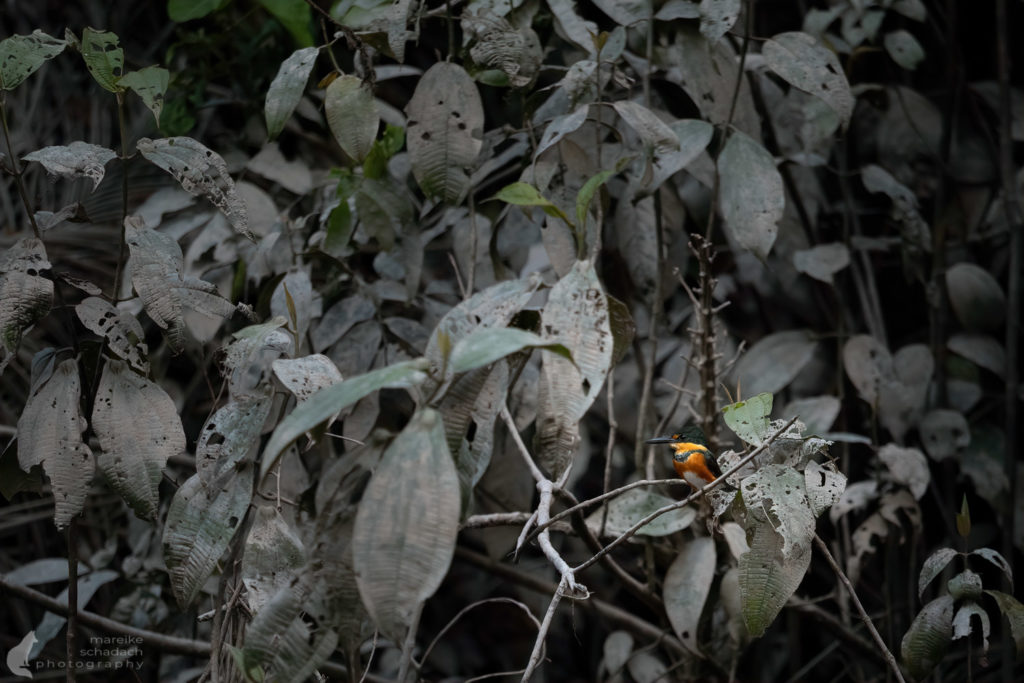
Farewell to the Jungle
Arrived in Nuevo Rocafuerte we climb the Chimborazo. No, unfortunately not the mountain but the hostel. If only it had been the mountain, we would have gotten more air than in our windowless room, a tiny oven. We have to pay 10 Euro extra for the air conditioning. Dinner is again rice, lentils and slimy-looking boiled banana. Even the dog, who begs me for a bite, spurns the plantain.
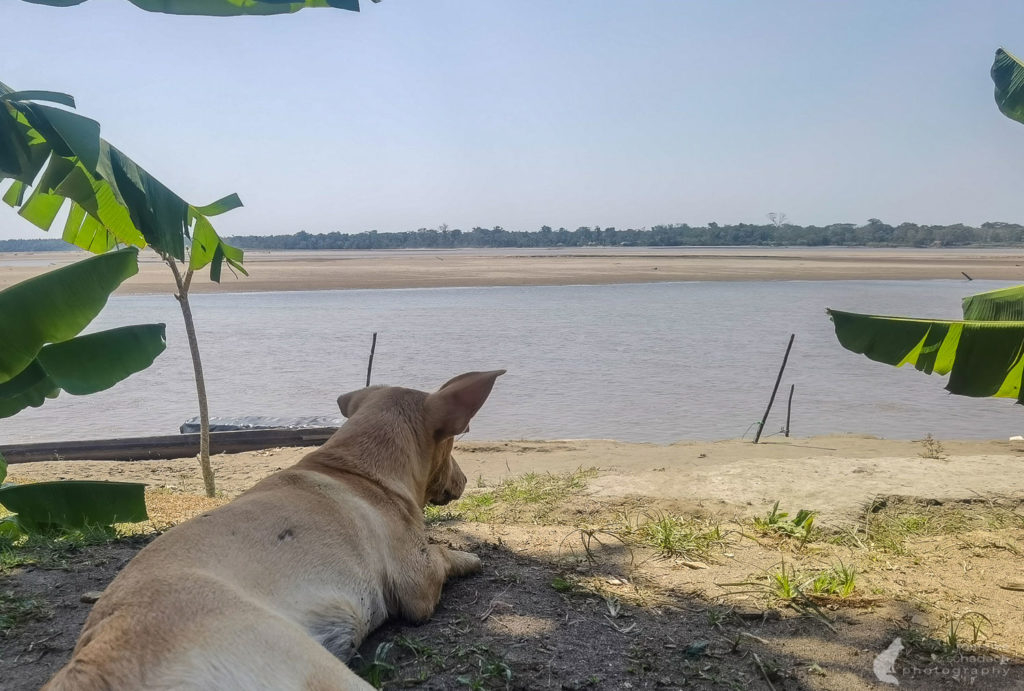
Speedboat from Nueva Rocafuerte to El Coca
At 6 o'clock in the morning, the speedboat goes back to El Coca. The trip is supposed to take five hours. I climb onto my cramped seat and settle in. With my thick camera backpack between my legs, I will probably have to remain in the once-assumed position for the entire ride. I wonder if I will ever be able to free my feet if we capsize.
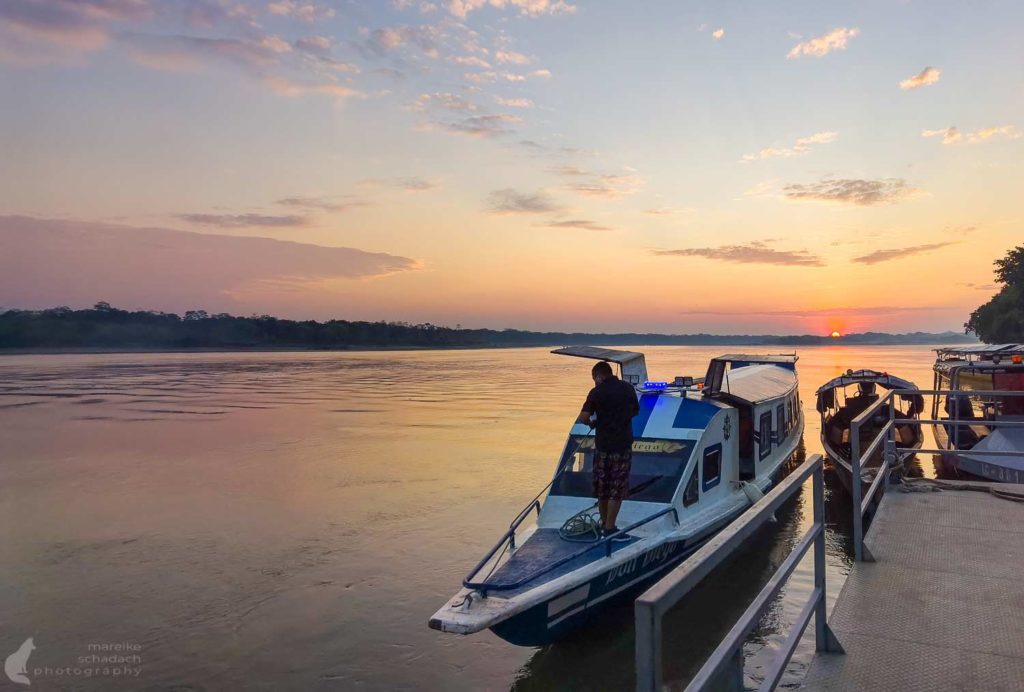
The boat is fast and the wind has no mercy. I put on my rain jacket and close my collar tightly under my chin. After about 40 minutes we stop, take on more guests, and the boat is refueled. To do this, fuel is piped down from a canister at the top of the embankment via a hose that is perhaps six meters long.
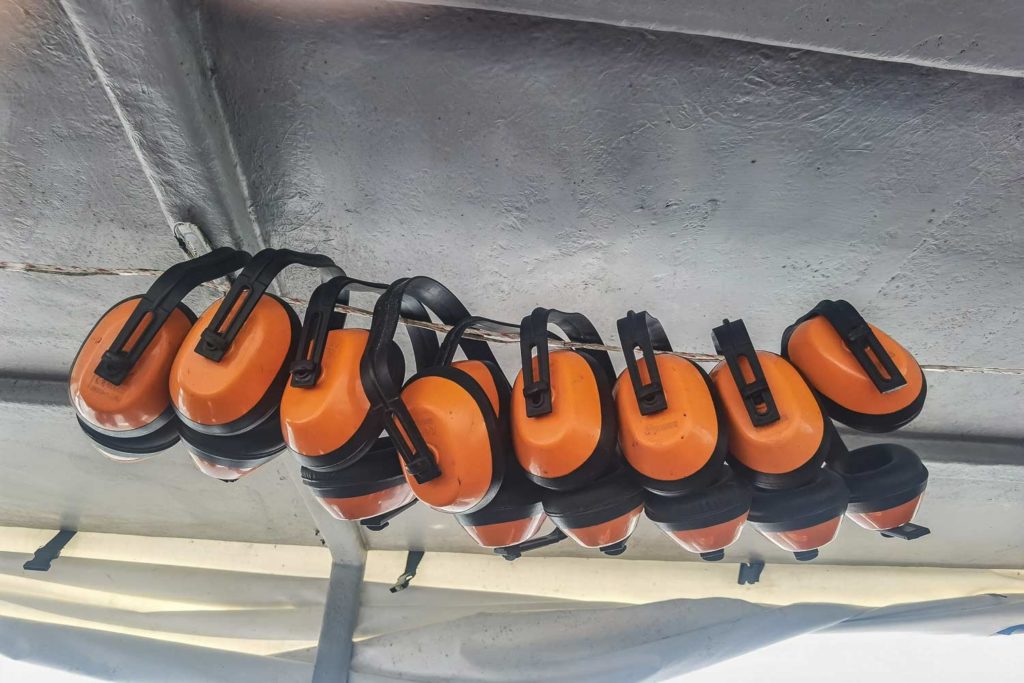
A while later we stop again, but this time in the middle of the river. Something seems to be wrong with the engine. While the problem is fixed on the spot, the captain scoops water out of the cockpit in front. Hmmm, does our trip end now? Not at all. Soon we are jetting along, making wild turns to avoid the branches and sandbars on the Rio Napo.
We see a variety of canoes, other speedboats, simple wooden canoes, school boats, Mississippi-style steamboats, and transport ships loaded with cars, trucks, or even tankers.
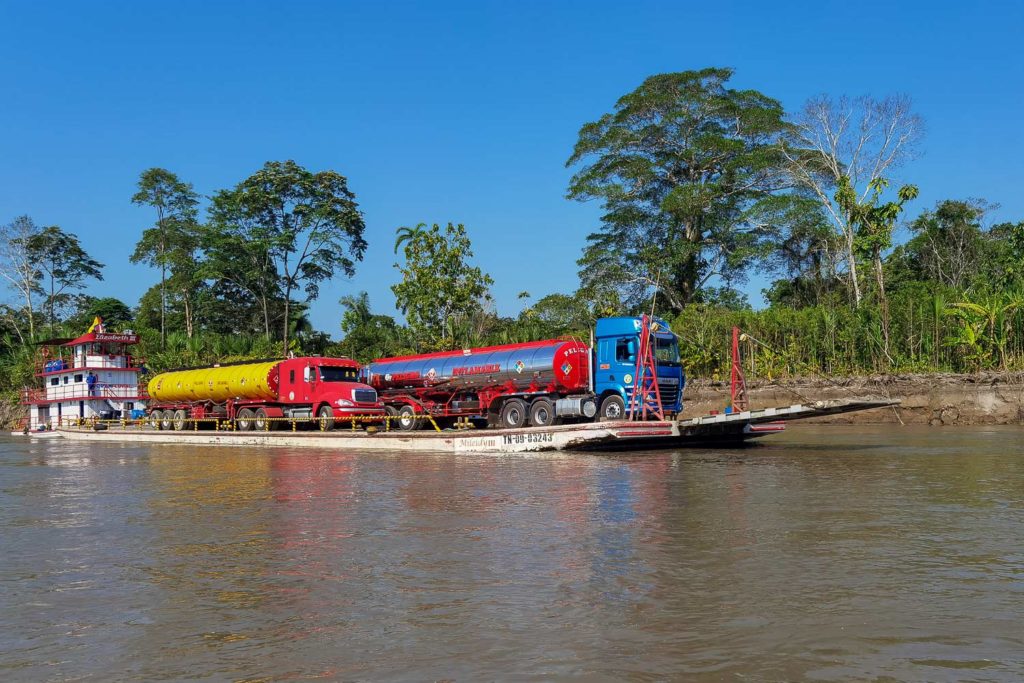
About halfway, we finally stop for restrooms and to buy snacks and drinks.
On we go. With the water level flat, the captain tries to hit the main current of the river, because this is where the water is deepest and safest to navigate. Suddenly, the boat makes a U-turn and turns diagonally into the bend. Just in time, our captain recognizes the shoal in front of us and drives around it at high speed.
Must haves for the trip with the speedboat:
- Snacks
- Drinks
- Sunglasses
- Sunscreen
- Long sleeve shirt
- Windbreaker jacket
- Music or audio book

Tips for your Packing List
The Amazon region in Ecuador is hot, humid and insects are numerous. In addition, it can rain more or less and on the boats it can be quite cold if you travel fast in the early morning.
For your packing list this means: you need something of everything.
- Sunscreen
- Sunglasses
- Base cap or sun hat
- Umbrella for rain and sun protection on an open boat
- Microfiber towel* for sun protection or for bathing
- Swimsuits
- Insect repellent
- Mosquito nets are available in most accommodations, but it is best to ask again.
- Malaria prophylaxis or malaria medication (check with the tropical institute beforehand)
- Water disinfection tablets, e.g. Micropur Forte*. Most accommodations provide drinking water, but it is better to have purification tablets with you for emergencies.
- Refillable drinking bottles (e.g. two 1 liter Nalgene Bottles*)
- Diarrhea tablets
- Rain protection for backpack and camera bag or waterproof bags
- Rain jacket
- Shorts and long pants (quick-drying material), e.g. zip-off pants from Fjällräven*
- Tops and long-sleeved shirts as sun/insect protection (quick-drying material)
- Sandals and/or closed shoes
- Rubber boots for jungle hikes (usually provided by the tour operator)
- Flashlight for night hikes, e.g. the Petzl Actic headlamp*
- Binoculars, e.g. the handy and waterproof Zeiss Terra ED 8×42*
- Camera equipment. You want to know what I take pictures with?
- If necessary, several camera batteries, chargers, world travel plugs (you may not have power all day and can only charge at certain times)
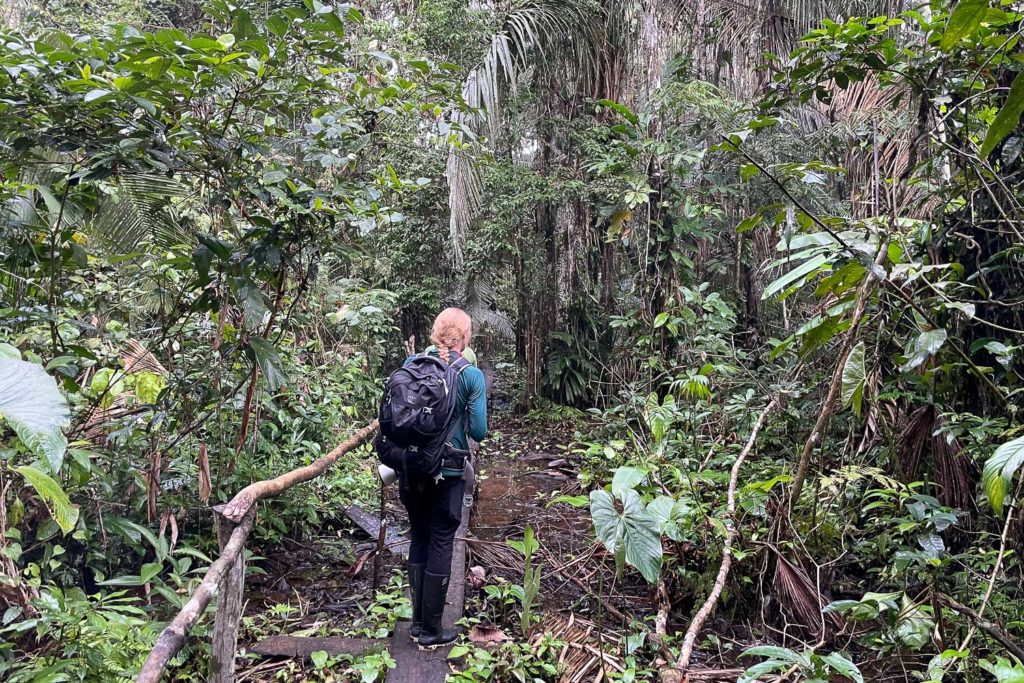
How to get to El Coca?
You have several options to get from Quito to El Coca:
- Airplane: duration about 40 minutes; cost about $130 - $160 round trip; airlines Latam and Aeroregional.
- Public bus: several times a day, duration about 6.5 to 8 hours; cost about 15-17 dollars. It is not so easy to buy a ticket online. But there is usually the possibility to contact via Whats App. For example Ecua Buses.
- Private transportation in a car: duration about 5 hours; cost about 154 dollars for two passengers. Where. For example, at Ecuador Bus. At MyDayTrip you can even book individual stopovers if you wish. Costs however also more.
We flew there and returned with a private car transport. The advantage of private transport is that you are absolutely flexible in terms of time and also see the beautiful mountain landscape of the eastern side of the Andes.
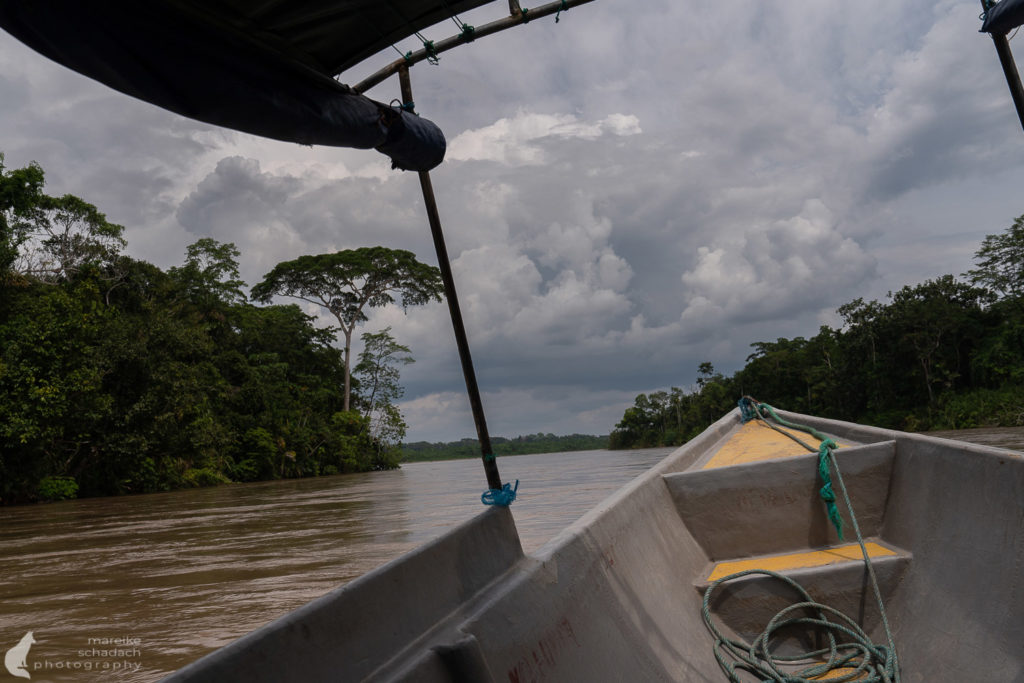
Book Recommendations for the Amazon of Ecuador
You want to know where the journey goes? Then I can recommend these books*.
You can order the books with a click on the pictures on Amazon. If you buy a product via an affiliate link, I get a small commission, and you help me to keep filling Fernweh-Motive with interesting articles. The product will not be more expensive for you, and you will do me a huge favor.
Have you ever been to the Amazon Basin of Ecuador? How did you like it? Do you have any questions about my article? If yes, then write me a comment!
Do you want to know when there are new articles on my blog? Then follow me on Facebook, Pinterest or Instagram. I would also be very happy if you share my article with your friends.
Recommendations for further Reading
Do you love wildlife as much as I do? Then you might also be interested in my articles about the King Penguins of Tierra del Fuego or Diving with Sea Lions near La Paz, Mexico.

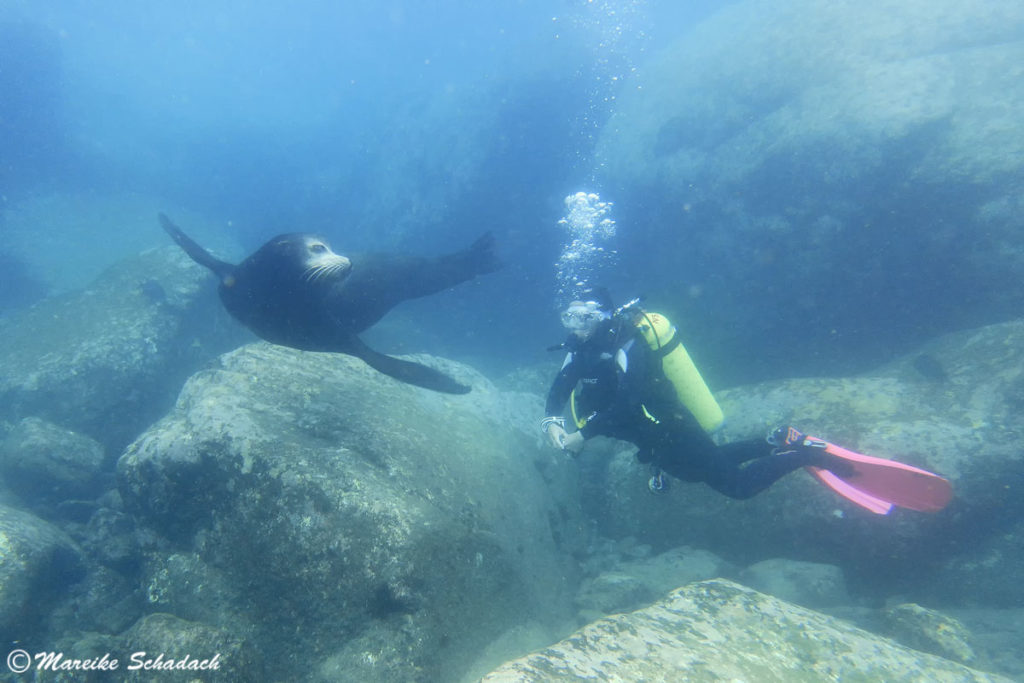
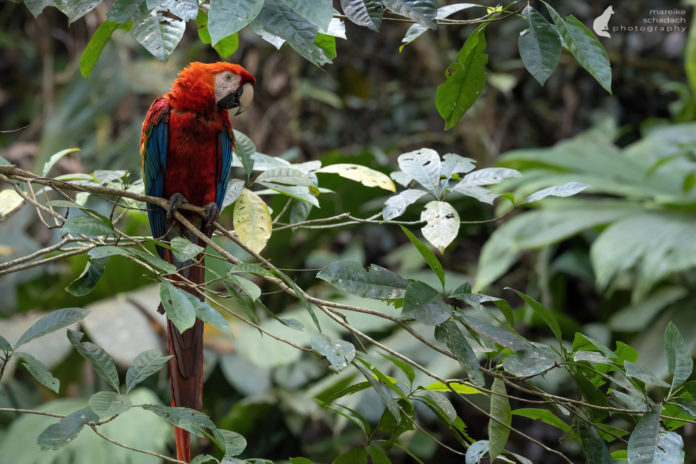









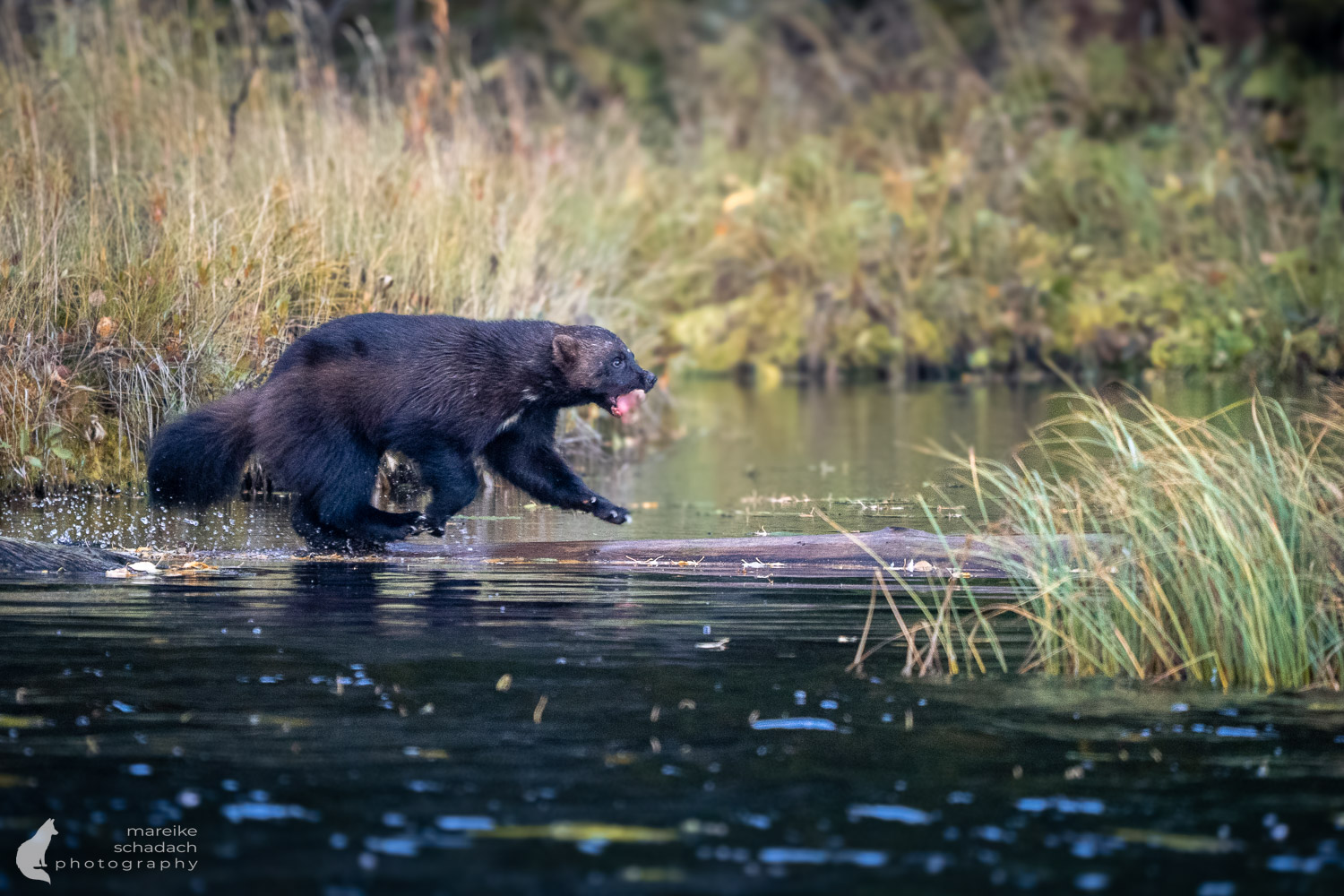
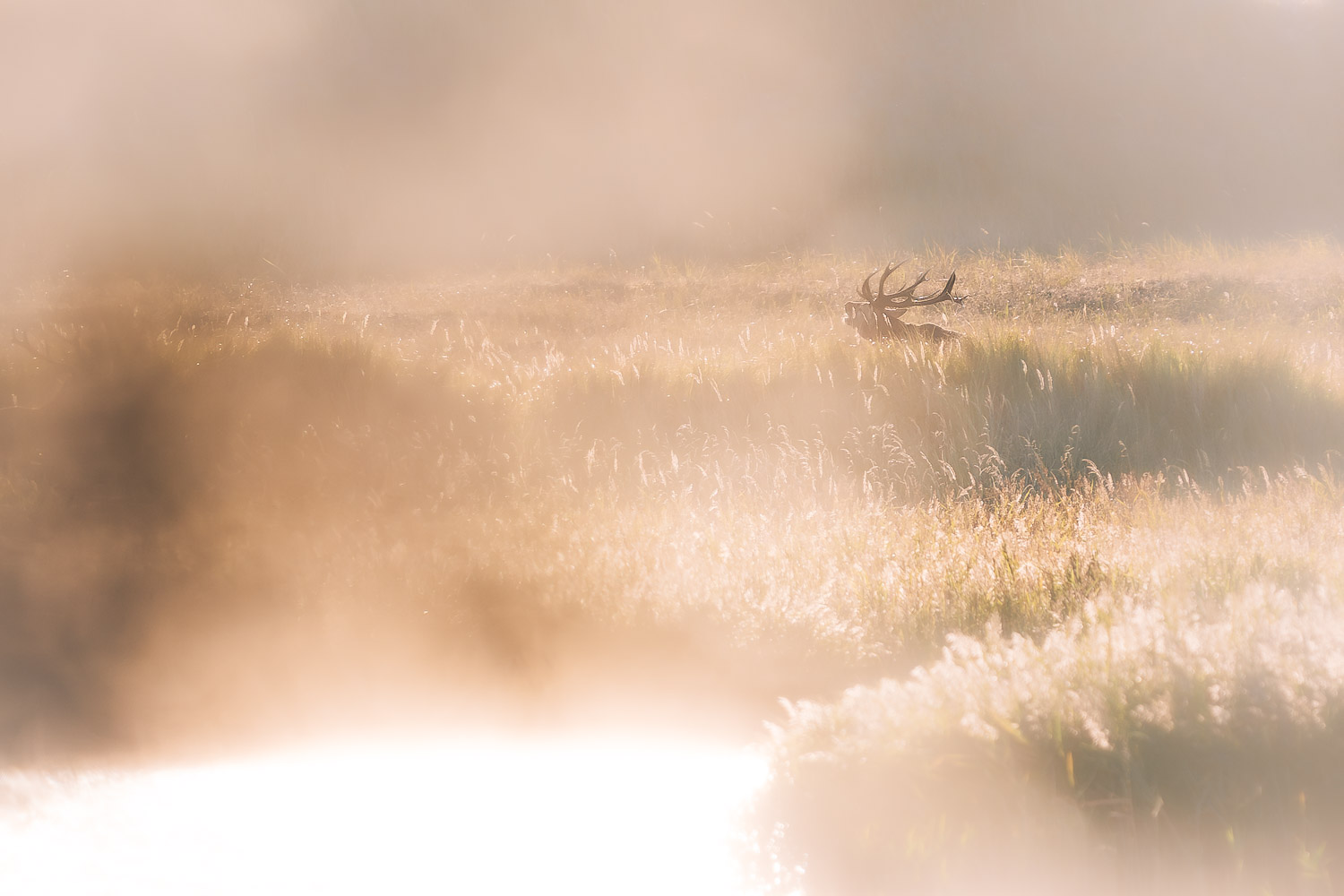
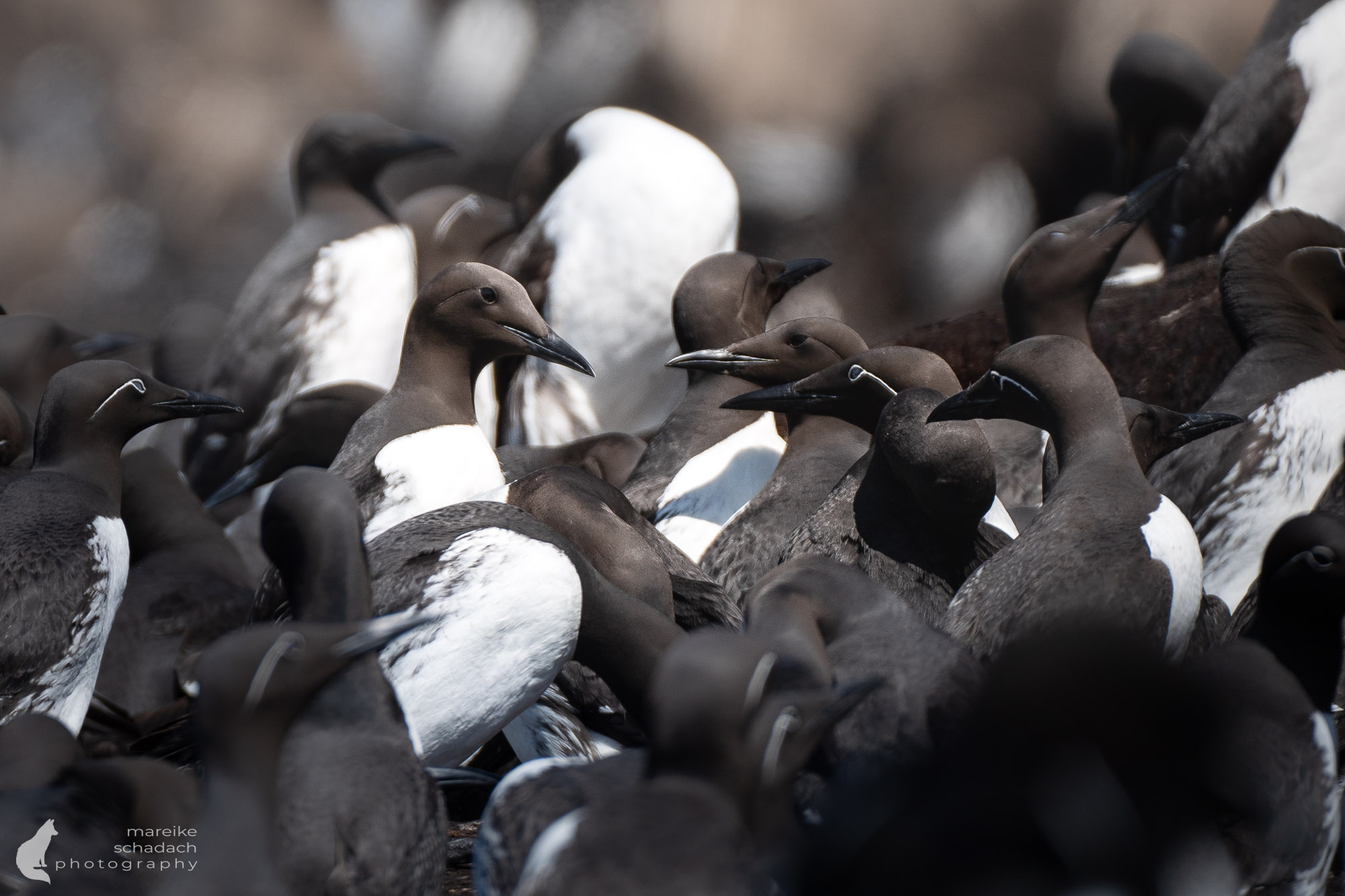
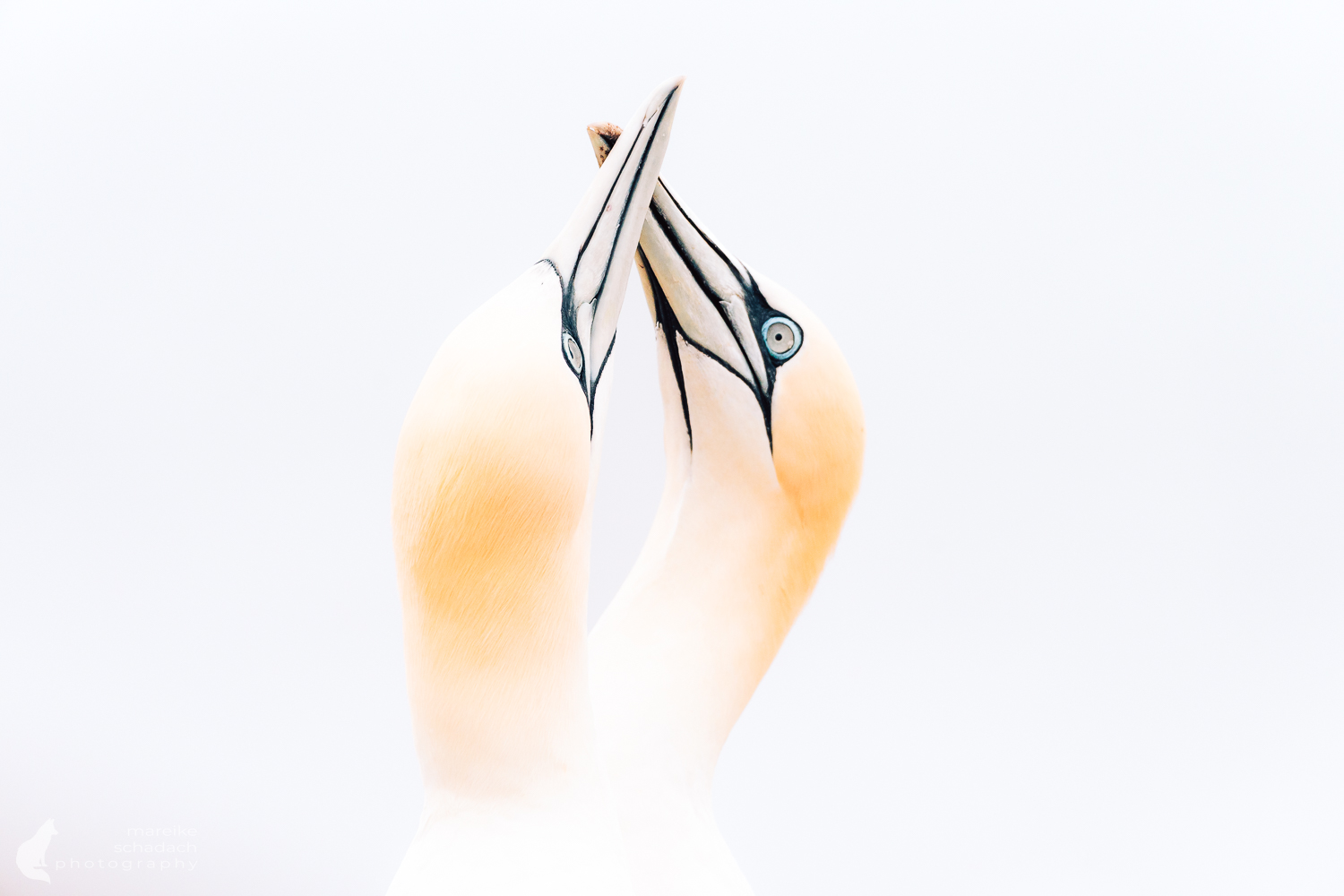

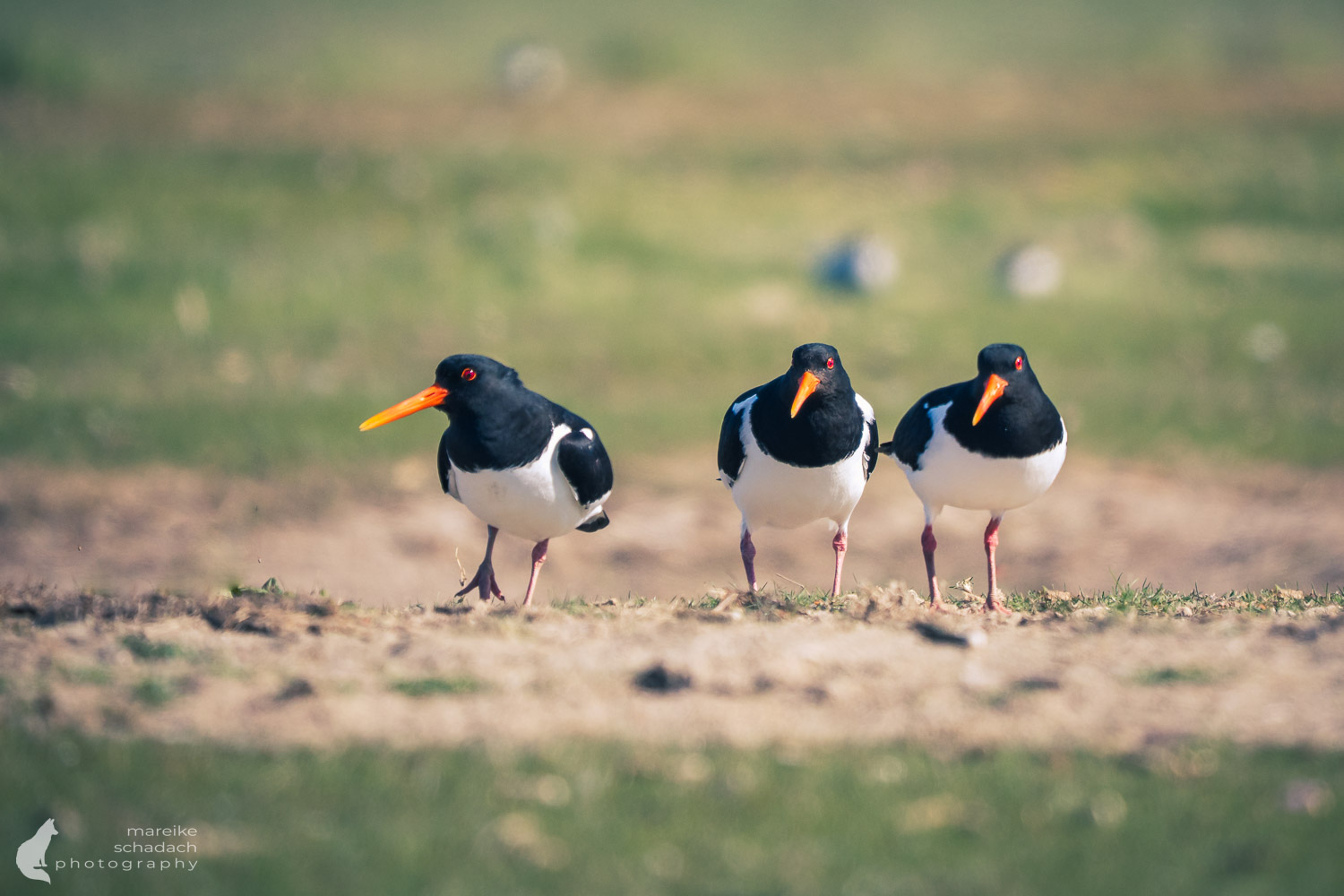
Danke für den Artikel. Grüße
Ganz lieben Dank für dein Feedback 🙂
Schöner Beitrag, der richtige Tropensehnsucht in mir auslöst!
Ganz lieben Dank, freut mich, dass dir mein Artikel gefällt 🙂
Toller Bericht, wo hast du dss gebucht? Bin auf der Suche nach genau soetwas 😃
Hallo Rico, ich weiß den Namen der Agentur leider nicht mehr, die waren in Coca und hatten verschiedene Touren im Angebot. Die Tour gab es so im Angebot nicht. Wir haben damals ein Angebot modifiziert, da wir auch länger bei den Delfinen sein wollten. Da wir eh eine individuelle Tour und keine Gruppentour haben wollten, war das kein Problem. Ich denke, solche individuellen Touren bieten viele Touranbieter an. Viele Grüße, Mareike